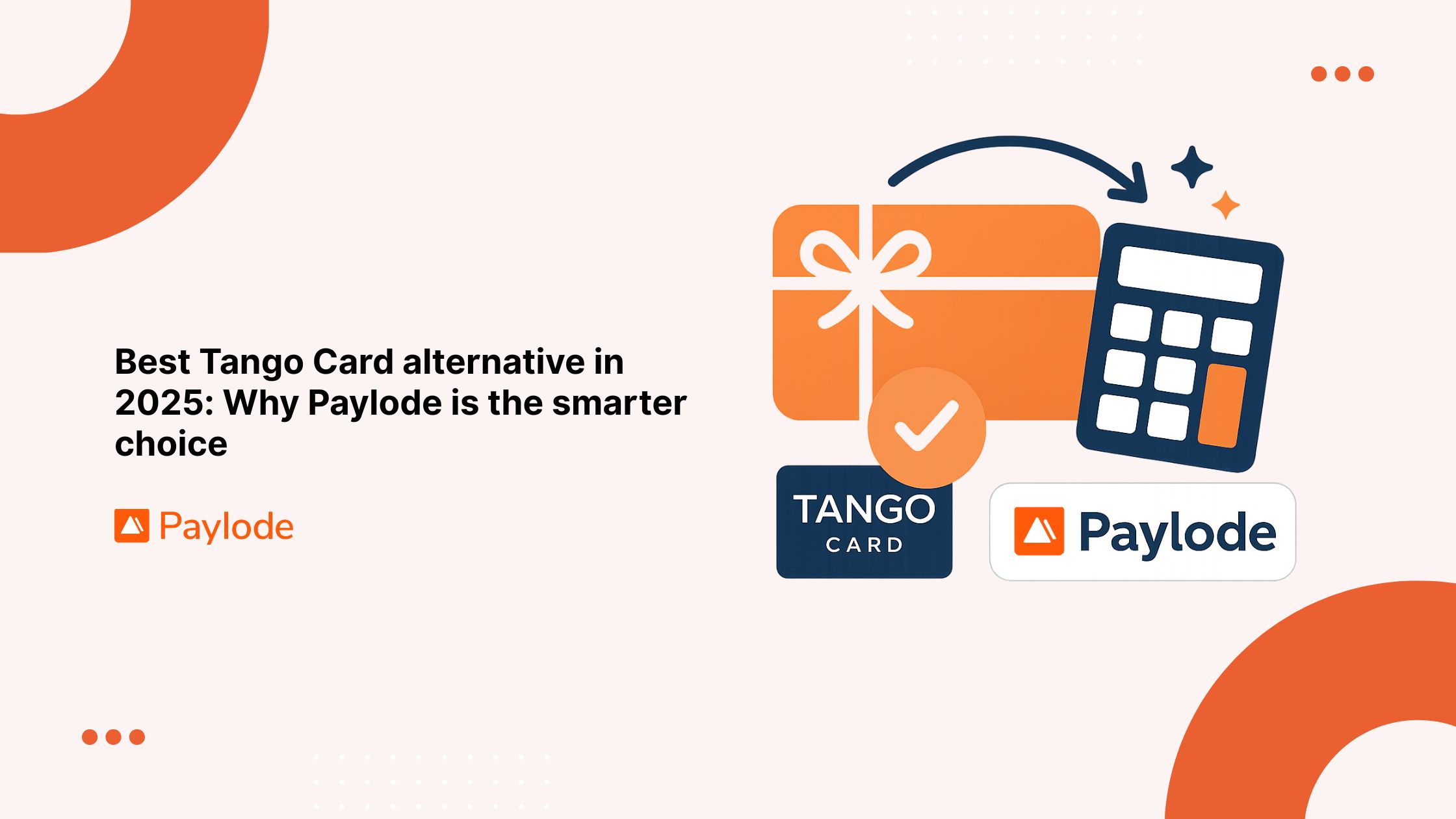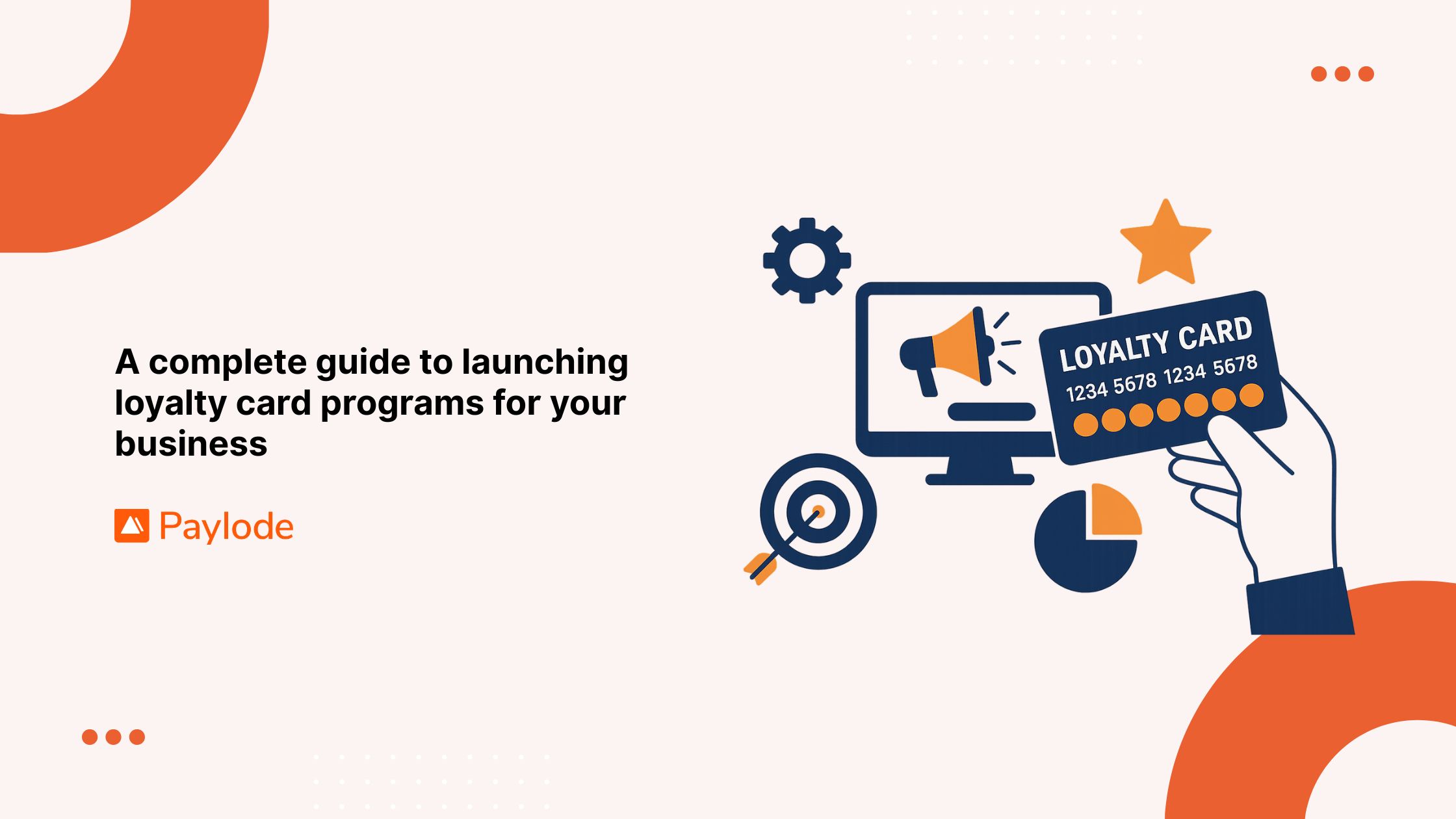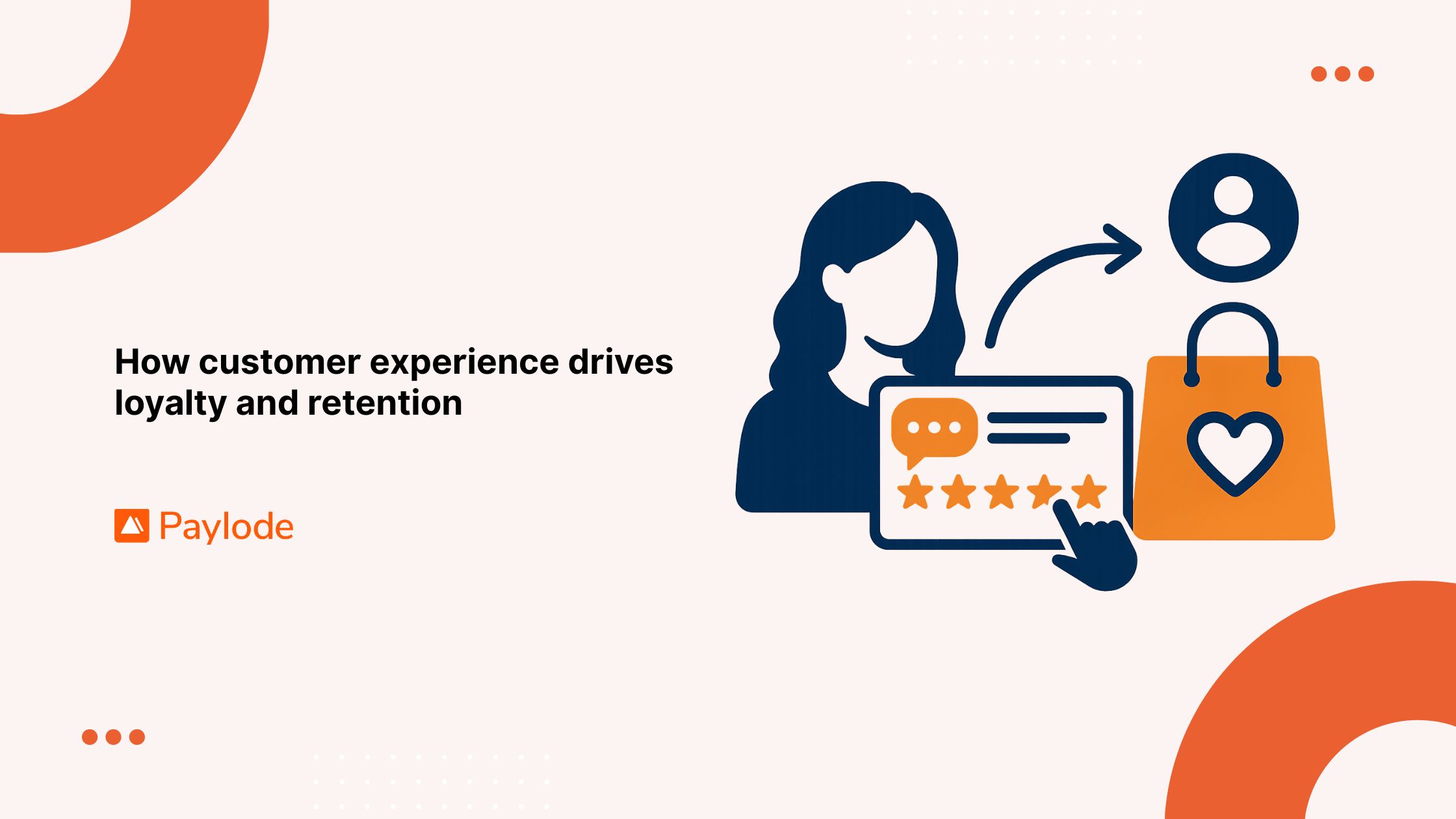Enterprises across industries are facing a tough challenge today: retaining customers while keeping acquisition costs under control. Traditional rewards programs—like paper punch cards, generic discounts, or one-size-fits-all offers—no longer meet customer expectations. People now expect personalized, digital-first experiences that feel relevant to their lifestyle.
This is where an Enterprise Loyalty Scheme comes into play. Unlike small-scale loyalty programs, an enterprise loyalty scheme is built to handle large customer bases, integrate seamlessly with business systems, and deliver meaningful rewards that go beyond discounts.
With the right loyalty platform, enterprises can:
- Increase customer retention.
- Boost lifetime value (LTV).
- Encourage behaviors like automatic payments, renewals, or paperless billing.
- Build both emotional and transactional loyalty.
At Paylode, we help enterprises design loyalty schemes that align with business outcomes—whether it’s reducing churn in telecom, improving tenant retention in residential real estate, or driving subscription renewals in digital health.
In this blog, we’ll cover everything you need to know about enterprise loyalty schemes: their definition, benefits, key features, best practices, industry applications, use cases, and trends. By the end, you’ll understand why loyalty is no longer optional—it’s a business growth engine.
What is an Enterprise Loyalty Scheme?
An enterprise loyalty scheme is a structured program designed to reward customers for their continued relationship with a brand. Unlike small business loyalty programs that focus on discounts or points, enterprise-level loyalty schemes are data-driven, scalable, and deeply integrated into the company’s ecosystem.
These schemes don’t just hand out rewards; they create an environment where customers feel recognized, valued, and motivated to keep engaging with the brand. For example:
- A telecom company might use an enterprise loyalty scheme to reduce churn and encourage customers to opt for higher-value plans.
- A financial institution may use it to increase cross-sell and upsell opportunities, driving more revenue.
- In real estate, an enterprise loyalty scheme can strengthen tenant retention by offering resident perks.
- For digital health platforms, loyalty schemes can encourage subscription renewals, boosting recurring revenue.
The key difference is scale and personalization. An enterprise loyalty scheme uses technology to understand individual preferences, purchase behavior, and engagement patterns—then rewards customers in ways that feel personal and relevant.
In short, an enterprise loyalty scheme is not just about giving discounts. It’s about creating long-term relationships that directly improve customer lifetime value (CLV) and overall business growth.
Why Enterprises Need an Enterprise Loyalty Scheme Today
Customer expectations are changing faster than ever. Traditional approaches like discounts or generic reward points are no longer enough to keep customers loyal. Enterprises across industries—telecom, financial services, real estate, and digital health — face increasing competition, higher customer acquisition costs, and shrinking attention spans.
This is where an enterprise loyalty scheme becomes a game-changer. Here’s why it matters today:
1. Rising Customer Acquisition Costs (CAC)
Acquiring new customers has become significantly more expensive in recent years. For enterprises, retaining existing customers is far more cost-effective than constantly chasing new ones. An enterprise loyalty scheme helps lower CAC by ensuring customers stay longer, spend more, and actively engage with the brand.
For instance, in telecom and MVNO services, loyalty schemes reduce churn by encouraging subscribers to stick to existing plans or upgrade instead of switching providers.
2. Customer Retention Drives Long-Term Growth
Retention isn’t just about keeping customers—it’s about increasing their value over time. Studies show even a 5% improvement in retention can boost profits by 25–95%. An enterprise loyalty scheme creates the structure for businesses to encourage repeat purchases, upgrades, and renewals.
For example, in residential real estate, loyalty schemes that include perks like rent payment flexibility or local service discounts can increase lease renewals by 15–20%.
3. Customers Expect Personalization
Modern customers want experiences that feel tailored to them. They’re less likely to respond to generic offers and more likely to engage with brands that provide personalized perks. An enterprise loyalty scheme uses data insights to segment audiences and deliver rewards that feel relevant.
Digital health providers, for example, can use loyalty software to offer personalized wellness perks or reminders, encouraging customers to continue their subscriptions.
4. Builds Emotional Connections, Not Just Transactions
A loyalty program focused only on discounts creates transactional relationships. An enterprise loyalty scheme, however, builds both emotional and behavioral loyalty. Customers feel recognized, appreciated, and motivated to stay connected beyond a single purchase.
For financial institutions, this could mean creating exclusive perks that encourage higher cross-sell and upsell opportunities, boosting revenue while deepening customer trust.
Quick Stat Recap:
- CAC is rising across industries → loyalty is more cost-effective.
- Retention boosts profitability by up to 95%.
- Personalization drives engagement and repeat behavior.
That’s why enterprises that adopt loyalty schemes today are securing a long-term competitive edge.
Enterprise Loyalty Schemes to Implement
Here are the top loyalty schemes enterprises should implement to maximize ROI:
1. Automatic Payment Rewards Scheme
Encourage customers to sign up for auto-pay by offering loyalty perks or exclusive benefits. This reduces churn and ensures predictable revenue.
See Paylode’s use case on automatic payments.
2. Paperless Billing Incentive Scheme
Reward customers for switching to paperless billing. This not only cuts costs but also boosts sustainability efforts while keeping customers engaged.
Learn more in Paylode’s switch to paperless solution.
3. Resident Perks for Real Estate
In the residential real estate sector, enterprises can offer lifestyle perks (gym memberships, home service discounts, etc.) to encourage tenant retention and lease renewals.
Example: See how Paylode powers resident perks.
4. Cross-Sell and Upsell Loyalty Scheme
For financial services enterprises, loyalty schemes can reward customers for adopting multiple products — like opening a savings account, applying for a credit card, or opting for insurance.
5. Subscription Renewal Scheme
In digital health, rewarding customers for renewing subscriptions ensures long-term retention and stable recurring revenue.
6. Lifestyle Perks Loyalty Scheme
Beyond discounts, enterprises should offer lifestyle perks (entertainment, dining, or wellness benefits). This creates emotional loyalty and keeps customers engaged outside of transactions.
7. Customer LTV Growth Scheme
Reward customers who increase their engagement, spending, or tenure. This scheme focuses on long-term value creation.
Explore Paylode’s solution to raise customer LTV.
Top Benefits of an Enterprise Loyalty Scheme for Growing Businesses
For enterprises, loyalty isn’t just about offering rewards—it’s about creating a system that delivers long-term business value. A well-designed enterprise loyalty scheme provides both financial and experiential benefits that directly impact retention, customer lifetime value (CLV), and brand reputation.
Here are the top benefits:
1. Improves Customer Retention
Retention is one of the biggest challenges for enterprises, especially in industries like telecom, real estate, and digital health. With competition offering near-identical products, keeping customers engaged requires something extra.
An enterprise loyalty scheme rewards consistent engagement—whether that’s paying bills on time, renewing subscriptions, or continuing leases. For example, offering resident perks in real estate can encourage tenants to renew instead of switching.
2. Increases Customer Lifetime Value (CLV)
Every enterprise aims to maximize the revenue earned from each customer. By rewarding behaviors like upgrades, cross-purchases, or adopting paperless billing, loyalty schemes naturally raise CLV.
For instance, businesses can leverage strategies such as automatic payments or raising customer LTV to encourage recurring revenue streams.
3. Creates Differentiation in Competitive Markets
Enterprises often operate in saturated markets where price wars are common. A strong enterprise loyalty scheme helps brands stand apart by offering experiences and perks competitors don’t.
Telecom providers, for example, can enhance stickiness by combining core services with additional perks—such as streaming bundles or data rollover options—through their MVNO loyalty software.
4. Strengthens Customer Relationships
Trust and emotional connection drive repeat purchases more than discounts alone. Loyalty schemes allow enterprises to recognize customers at every touchpoint, turning one-time buyers into long-term advocates.
For financial institutions, this could mean offering personalized financial advice or exclusive loan offers through a financial services loyalty solution.
5. Provides Rich Customer Insights
Modern enterprise loyalty schemes are more than just points systems—they’re data engines. By analyzing behavior, enterprises gain visibility into customer preferences, buying patterns, and engagement trends.
This data allows businesses to make informed decisions about campaigns, upsell opportunities, and retention strategies. For example, an ISP loyalty program can track data usage behavior and provide targeted perks that encourage higher-tier upgrades.
6. Boosts Revenue with Cross-Selling and Upselling
Loyal customers are more likely to try new products or services. Enterprises can design their loyalty schemes to highlight new offerings and increase customer adoption.
For example, digital health platforms can bundle fitness perks or mental health services into their loyalty program, driving additional subscription revenue.
7. Encourages Positive Customer Behavior
The best loyalty schemes are designed to nudge customers toward behaviors that benefit both the customer and the enterprise. These include signing up for paperless billing, adopting auto-payments, or renewing earlier.
By rewarding such actions, enterprises lower operational costs while customers enjoy convenience and exclusive benefits.
Key Takeaway:
An enterprise loyalty scheme isn’t just about rewards—it’s a strategic growth tool that improves retention, boosts revenue, strengthens relationships, and delivers data-driven insights for sustainable success.
Key Features of a Modern Enterprise Loyalty Scheme
To deliver real ROI, an enterprise loyalty scheme must go beyond generic rewards and adopt features that are built for scale, automation, and personalization. Here are the essential capabilities enterprises should look for:
1. Personalization Engine
Customers expect brands to know them. A modern loyalty platform should deliver personalized rewards and experiences based on purchase history, demographics, and engagement patterns. For example, a digital health company could provide wellness-related perks to frequent app users, while a real estate enterprise might offer lifestyle perks to tenants through resident-focused loyalty programs.
2. Automated Reward Triggers
Manual tracking no longer works for enterprises with thousands or millions of customers. A modern scheme uses automated triggers to issue rewards when customers hit milestones—such as bill payments, renewals, or referrals. This not only reduces operational effort but also ensures customers feel instantly recognized.
3. Analytics Dashboard
An analytics dashboard is the nerve center of a loyalty scheme. Enterprises need visibility into reward redemption rates, active vs. inactive members, and the impact of perks on retention and revenue. These insights empower marketing and CX teams to continuously optimize loyalty initiatives.
4. Seamless CRM and Billing Integration
Enterprises typically run on complex systems—CRMs, billing platforms, and mobile apps. A loyalty scheme should integrate seamlessly with these systems so rewards feel natural within the customer journey. For example, offering perks during checkout or showing loyalty balances in billing portals enhances adoption.
5. Scalability for Large Customer Bases
Enterprises often manage millions of transactions daily. A loyalty scheme must be scalable and enterprise-ready, capable of handling large data volumes, multiple locations, and diverse customer segments without downtime. This scalability ensures consistent customer experiences across geographies and business units.
Key Takeaway:
A future-ready enterprise loyalty scheme is defined by personalization, automation, actionable insights, seamless integration, and scalability. These features make loyalty not just a marketing add-on but a core growth driver for enterprise businesses.
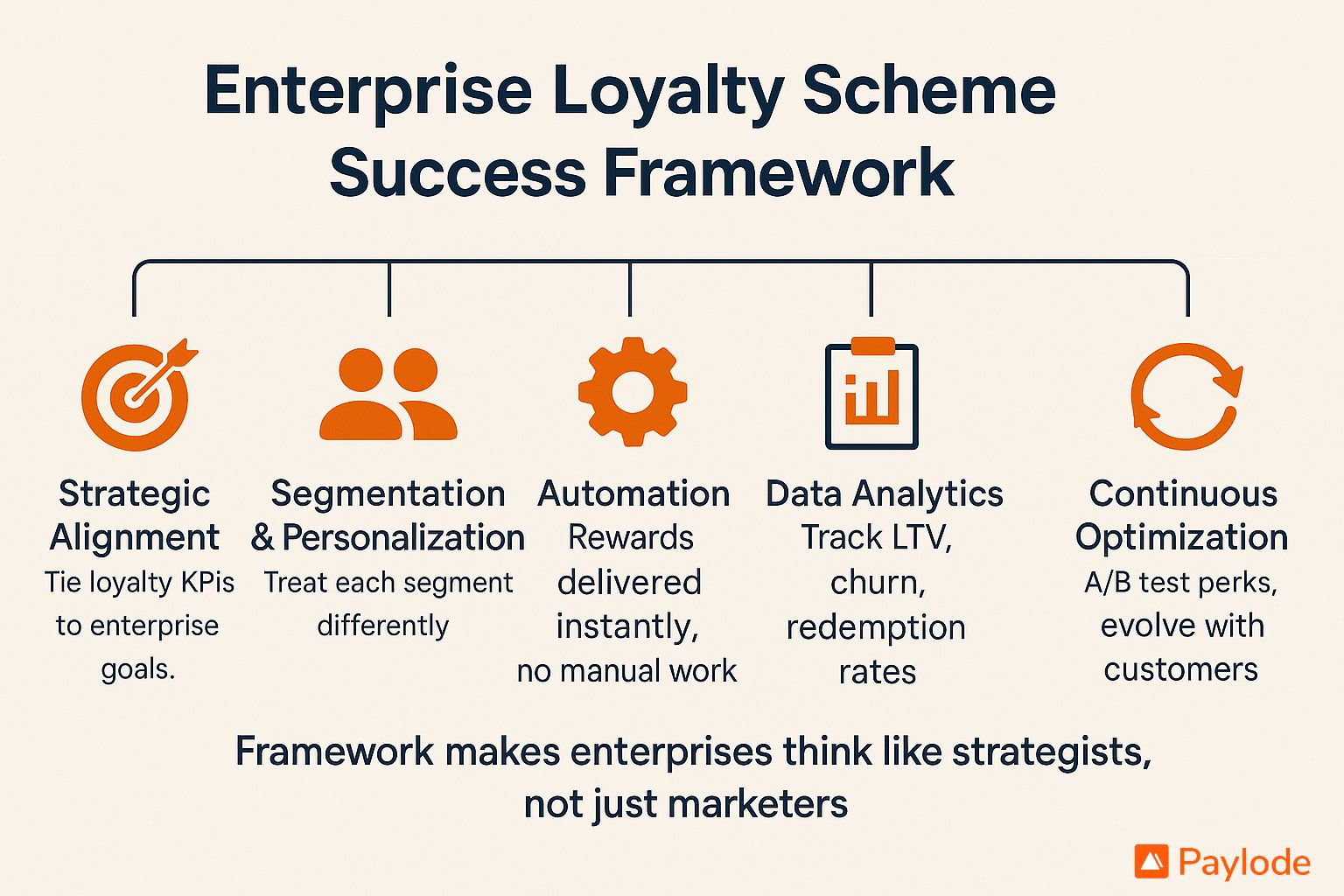
Best Practices for Implementing an Enterprise Loyalty Scheme
Even with the right features in place, the success of an enterprise loyalty scheme depends on how well it is implemented. Large businesses often face the challenge of balancing customer expectations with operational efficiency. Here are some best practices to maximize impact:
1. Align Loyalty Goals with Business KPIs
An enterprise loyalty scheme should directly support measurable business goals. For instance, if your priority is reducing churn, loyalty perks should encourage long-term engagement. If the aim is to increase customer lifetime value (LTV), the scheme should be designed to cross-sell, upsell, or improve retention. By aligning loyalty objectives with KPIs like renewal rates, NPS, or average revenue per user, enterprises ensure their loyalty investment drives real results.
2. Segment Customers for Relevant Perks
Enterprises serve diverse customer bases. Offering the same perk to all segments reduces impact. Instead, segment customers by usage behavior, demographics, or transaction history. For example:
- Telecom enterprises can design perks for heavy data users vs. casual users.
- Real estate businesses can offer different perks to long-term tenants vs. new residents.
- Segmentation ensures rewards feel meaningful and increase adoption.
3. Automate Perks for Efficiency
Manual operations are not scalable at an enterprise level. Automating perks—such as rewards for on-time payments, renewals, or referrals—saves time and ensures instant recognition. For instance, setting up automatic payment-linked perks helps enterprises nudge customers towards frictionless billing and reduce missed payments.
4. Use Loyalty to Drive Auto-Pay, Renewals, or Paperless Billing
A powerful application of an enterprise loyalty scheme is behavioral reinforcement. Loyalty perks can be tied to specific actions enterprises want customers to adopt:
- Offering perks for switching to paperless billing.
- Incentivizing customers who set up auto-pay to ensure recurring revenue.
- Rewarding contract renewals or subscription upgrades.
- By using perks as nudges, enterprises can drive efficiency and cut operational costs while improving customer satisfaction.
5. Continuous Measurement & Optimization
Loyalty is not a one-time setup—it requires ongoing optimization. Enterprises should monitor redemption rates, churn among loyalty members vs. non-members, and ROI across segments. For example, if perks for a digital health app aren’t driving subscription renewals, the offering can be adjusted based on insights from loyalty analytics. Continuous optimization ensures the loyalty scheme remains relevant as customer expectations evolve.
Key Takeaway:
Enterprises that succeed with loyalty programs tie them to core business KPIs, segment customers, automate rewards, incentivize strategic behaviors, and continuously optimize. This makes an enterprise loyalty scheme both a retention engine and a growth driver.
Industry Applications of an Enterprise Loyalty Scheme
An enterprise loyalty scheme is not one-size-fits-all. Its strength lies in adaptability across industries, where different business models and customer behaviors demand tailored approaches. Let’s explore how loyalty programs deliver measurable ROI in key sectors:
Telecom & MVNO – Reducing Churn
In the telecom industry, churn is one of the biggest challenges. Customers often switch providers for better deals or added value. With an enterprise loyalty scheme, telecom providers and MVNOs can reduce churn by rewarding customers for tenure, upgrades, or referrals. Offering perks like bonus data for loyal subscribers or rewards for bundling services makes customers think twice before leaving. As a result, retention improves while acquisition costs decrease.
For larger telecom operators, a customized loyalty framework—like the one described for Telecom & MVNO enterprises—can directly impact customer lifetime value (CLV) through targeted engagement.
ISP – Retention Through Automatic Payments
Internet Service Providers (ISPs) face recurring billing friction, often leading to late or missed payments. An enterprise loyalty scheme can solve this by incentivizing automatic payments. For example, rewarding customers who enable autopay or switch to paperless billing improves retention and creates predictable recurring revenue.
By integrating loyalty rewards with billing systems, ISPs can reduce support overhead, improve collection rates, and increase satisfaction. See how ISP loyalty software is being used to strengthen retention strategies.
Residential Real Estate – Tenant Retention Through Resident Perks
For property managers and real estate operators, tenant churn is costly. Offering resident perks—like discounts on local services, rewards for renewing leases, or incentives for referring new tenants—can significantly improve retention. This approach transforms the tenant experience from transactional to community-driven.
Paylode’s residential real estate loyalty software is designed to help operators create long-term relationships with tenants, reduce vacancy cycles, and maximize portfolio value.
Financial Services – Driving Cross-Sell and Upsell Growth
In financial services, customer trust and engagement directly impact profitability. A strong enterprise loyalty scheme can encourage customers to adopt additional services — credit cards, loans, or investment products. For example, offering perks for maintaining a minimum balance, setting up direct deposits, or adopting digital tools helps banks and fintechs improve cross-sell rates.
The tailored approach of financial services loyalty software ensures that customer incentives align with compliance requirements while driving measurable growth in revenue per customer.
Digital Health – Subscription Renewals
Digital health platforms often operate on subscription models, where renewals are critical to long-term growth. Loyalty schemes can reward patients for consistent engagement, appointment attendance, or subscription renewals. For example, perks for completing wellness milestones or using telehealth features increase stickiness.
With digital health loyalty software, providers can not only improve renewal rates but also encourage healthier behaviors, leading to stronger brand trust and better health outcomes.
Key Takeaway:
Across industries—from telecom and ISPs to real estate, financial services, and digital health—enterprise loyalty schemes reduce churn, improve retention, and drive revenue growth. The adaptability of loyalty frameworks ensures each sector benefits in a way that directly aligns with its core business goals.
Use Cases of an Enterprise Loyalty Scheme
An enterprise loyalty scheme is not just about points and discounts—it’s about solving real business challenges while enhancing the customer experience. From increasing revenue to reducing operational friction, here are some high-impact use cases that show how enterprises can maximize ROI.
Boosting Customer Lifetime Value (LTV)
One of the most powerful outcomes of a loyalty scheme is its ability to raise customer LTV. When customers feel valued, they stay longer, engage more, and spend more across their lifecycle. Enterprises can implement tiered rewards, exclusive perks, or milestone-based benefits to encourage repeat purchases and deeper relationships.
For example, subscription-driven businesses can reward long-term users with additional features, while financial institutions can provide premium benefits to loyal depositors. Learn how Paylode helps organizations raise customer LTV through personalized loyalty solutions.
Incentivizing Paperless Billing
Paper billing not only creates unnecessary costs but also adds friction for customers. An enterprise loyalty scheme can motivate users to opt for digital statements by rewarding them with perks. This improves operational efficiency while reducing environmental impact.
For instance, ISPs and utilities can offer exclusive loyalty points or discounts to those who make the switch. Discover how Paylode enables enterprises to switch customers to paperless billing seamlessly through built-in loyalty perks.
Driving Automatic Payment Adoption
Late payments create cash flow challenges and increase administrative overhead. By using loyalty perks, enterprises can nudge customers to enable automatic payments. This reduces churn risk, ensures predictable revenue, and strengthens long-term relationships.
For example, telecom providers can reward subscribers who set up auto-pay with bonus data or entertainment vouchers. Explore how Paylode supports businesses in promoting automatic payments as part of a broader retention strategy.
Offering Lifestyle-Based Resident Perks
In industries like real estate, customer experience is about more than just service—it’s about lifestyle. With loyalty programs, operators can offer resident perks such as local restaurant discounts, fitness memberships, or partner deals. This transforms everyday living into a rewarding experience, fostering emotional connection and reducing tenant turnover.
Property managers using Paylode’s resident perks feature have reported higher tenant satisfaction, improved renewal rates, and stronger community engagement.
Creating Emotional Loyalty Through Personalized Rewards
Beyond transactional benefits, loyalty programs can build emotional connections with customers. By leveraging data-driven personalization, enterprises can offer rewards that truly resonate—whether it’s a birthday perk, wellness incentive, or exclusive early access to services.
This type of emotional loyalty goes beyond discounts. It creates brand advocates who not only stay longer but also promote the business within their networks.
Key Takeaway:
Enterprise loyalty schemes are versatile tools that go far beyond retention. From boosting LTV and encouraging paperless adoption to driving auto-pay enrollment, offering lifestyle perks, and creating emotional connections, enterprises can turn loyalty into a competitive advantage.
Measuring the Success of an Enterprise Loyalty Scheme
Launching an enterprise loyalty scheme is just the beginning—the real impact comes from how well you measure and optimize performance over time. By tracking the right metrics, enterprises can ensure their loyalty initiatives not only delight customers but also drive measurable business outcomes.
Here are the key metrics to evaluate success:
Retention Rates
Retention is often the single most critical measure of a loyalty program’s effectiveness. A well-designed scheme should reduce churn and increase the percentage of repeat customers. For example, telecoms and ISPs that offer loyalty perks for customers who commit to longer contracts often see a sharp drop in cancellations.
If retention rates trend upward after implementing loyalty rewards, it’s a clear signal that your program is creating real value for both the business and its customers.
Customer Lifetime Value (LTV)
The ultimate goal of any loyalty strategy is to raise customer lifetime value. By tracking average spend and the duration of customer relationships, enterprises can assess whether their loyalty scheme is delivering long-term profitability.
For example, a financial services provider might measure LTV increases among customers who actively redeem perks compared to those who don’t participate. An uptick in LTV demonstrates that customers are engaging more deeply thanks to the loyalty structure.
Perk Redemption Rates
Offering perks is only valuable if customers use them. Monitoring redemption rates helps enterprises understand which rewards resonate most.
- High redemption rates = customers find value in the perks.
- Low redemption rates = the rewards may not align with customer needs or interests.
Continuous analysis ensures that perks remain relevant, personalized, and motivating enough to drive desired behaviors like paperless billing or automatic payments.
Revenue Growth
At the enterprise level, loyalty programs should be tied directly to revenue goals. Whether through increased cross-sell, upsell opportunities, or reduced churn, loyalty programs are expected to generate measurable revenue growth.
For example:
- ISPs may track additional revenue from customers who switch to higher-tier plans as part of loyalty rewards.
- Real estate operators can measure incremental income from extended tenant leases driven by resident perks.
By linking loyalty to revenue outcomes, businesses can validate ROI and secure executive buy-in for ongoing investment.
Dashboards and Analytics
Modern enterprise loyalty schemes are powered by real-time analytics dashboards that track retention, engagement, and financial outcomes in one place. This allows managers to make data-driven adjustments quickly.
For instance, if perk redemption rates are strong but LTV growth is stagnant, analytics can highlight areas where rewards need to be more strategically tied to high-value actions.
Dashboards also provide visibility across departments—marketing, customer success, and finance—ensuring loyalty is not treated as a siloed initiative but as a company-wide growth driver.
Key Takeaway:
Measuring success in an enterprise loyalty scheme requires a mix of retention tracking, customer LTV analysis, perk redemption monitoring, and direct revenue growth measurement—all supported by robust dashboards and analytics. When businesses track these metrics consistently, loyalty programs shift from “feel-good initiatives” to high-impact growth engines.
Why Paylode is the Right Partner for Your Enterprise Loyalty Scheme
Selecting the right partner is critical for the long-term success of any enterprise loyalty scheme. While traditional providers may offer cookie-cutter solutions, Paylode delivers a loyalty platform purpose-built for enterprises that need scalability, personalization, and measurable ROI.
Here’s why Paylode stands out:
Enterprise-Grade Platform
Paylode’s platform is designed to support large customer bases with millions of members. Whether you’re a telecom provider managing churn across multiple regions or a real estate operator handling thousands of tenants, Paylode ensures your loyalty program remains fast, stable, and secure at scale.
With a robust architecture, enterprises can confidently grow their customer base without worrying about performance bottlenecks.
Industry-Specific Integrations
Every industry has unique challenges. Paylode addresses this by offering deep integrations that connect loyalty initiatives directly to billing systems, CRMs, and core business applications.
- Telecom & MVNOs: Reward loyalty with perks tied to contract renewals or upgrades.
- ISPs: Incentivize automatic payments or paperless billing.
- Residential Real Estate: Offer lifestyle-driven resident perks that boost tenant retention.
- Financial Services: Enable perks tied to product usage and cross-sell opportunities.
- Digital Health: Reward subscription renewals and encourage healthier engagement patterns.
These integrations ensure loyalty isn’t just an add-on—it’s seamlessly woven into everyday customer experiences.
Proven ROI
An enterprise loyalty scheme should do more than engage customers—it must deliver tangible business growth. Paylode has a proven track record of increasing retention, boosting customer lifetime value (LTV), and driving incremental revenue.
By tying rewards directly to desired customer actions—like autopay adoption, renewals, or higher-tier subscriptions—Paylode ensures loyalty initiatives deliver measurable impact on both top-line and bottom-line metrics.
Case Study Success Across Industries
Paylode’s results speak for themselves. Across multiple industries, enterprises have experienced transformational outcomes:
- Telecom & MVNOs: Reduced churn rates and improved LTV by over 25%.
- ISPs: Adoption of autopay and paperless billing surged, cutting operational costs while increasing retention.
- Residential Real Estate: Tenant renewal rates increased by 15–20% thanks to personalized resident perks.
- Financial Services: Upsell and cross-sell opportunities drove 20–25% revenue growth.
- Digital Health: Subscription renewal rates improved by nearly 22%, strengthening recurring revenue streams.
These results demonstrate why leading enterprises across sectors trust Paylode to power their loyalty strategies.
Key Takeaway:
Paylode isn’t just another loyalty provider—it’s an enterprise-ready partner that combines scalable technology, industry-specific integrations, and proven ROI. From telecoms to real estate, financial services to digital health, Paylode enables enterprises to transform loyalty into a measurable growth engine.
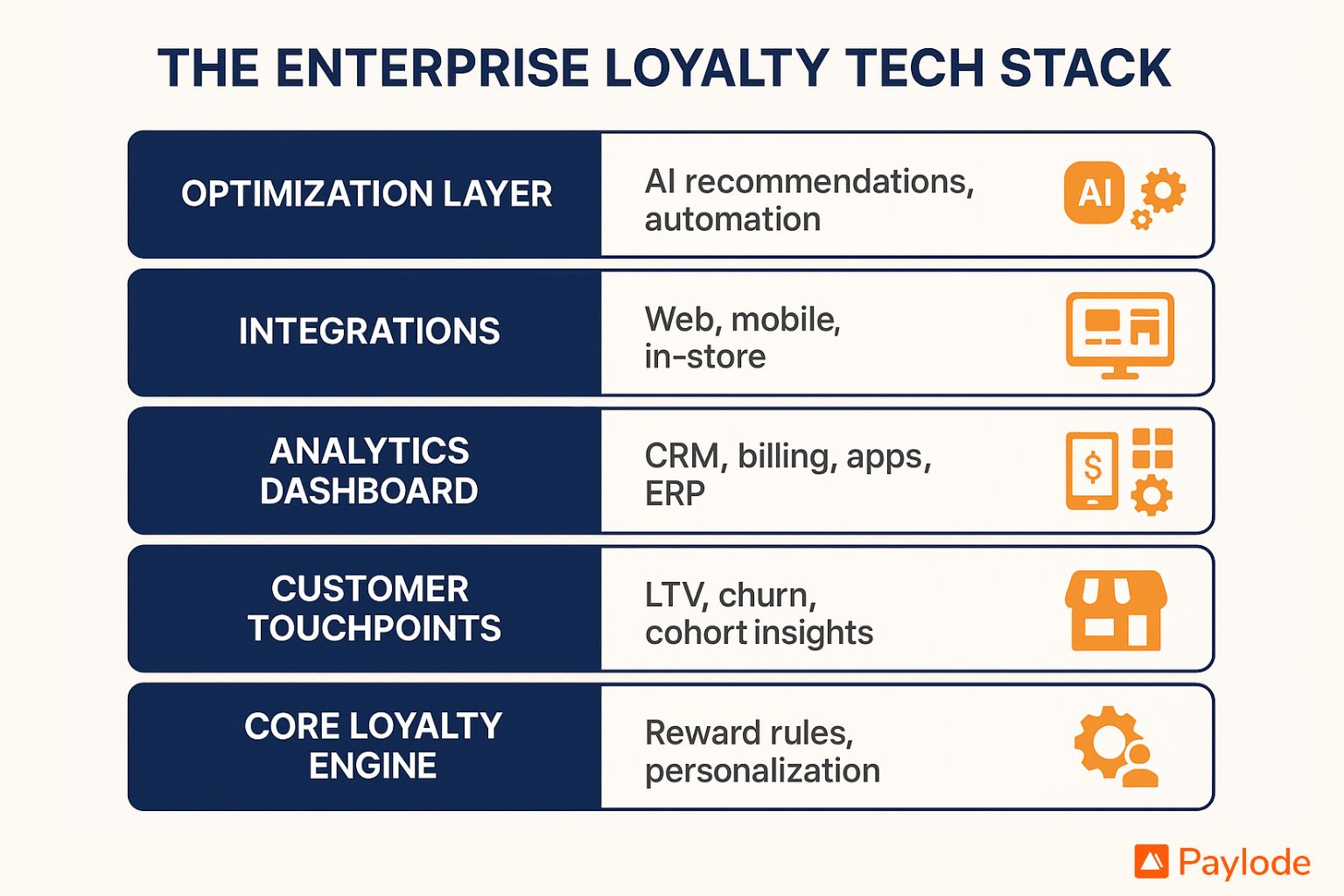
Conclusion: The Future of Enterprise Loyalty Schemes
Loyalty is no longer a “nice-to-have” program sitting on the sidelines—it has become a central pillar of enterprise growth strategy. In a competitive market, where customers have endless choices and low switching costs, enterprises must focus on building deeper, longer-lasting relationships. That’s where a modern enterprise loyalty scheme comes in.
Unlike old models that relied solely on discounts or generic offers, today’s loyalty frameworks focus on personalization, automation, and emotional engagement. Enterprises that invest in loyalty are seeing real business impact—from reduced churn and higher renewal rates to increased customer lifetime value and sustainable revenue growth.
This shift is particularly evident in industries like telecom, ISPs, residential real estate, financial services, and digital health, where customer relationships directly impact retention and recurring revenue. By embedding loyalty into billing, payments, and everyday customer interactions, enterprises can transform ordinary transactions into meaningful, sticky relationships.
At Paylode, we’re helping enterprises go beyond traditional points and discounts to deliver personalized, industry-specific loyalty solutions that create measurable results. Whether it’s incentivizing automatic payments, improving tenant retention with resident perks, or boosting digital health subscription renewals, Paylode empowers enterprises to turn loyalty into a growth engine.
FAQs About Enterprise Loyalty Schemes
Q1. What is an enterprise loyalty scheme?
An enterprise loyalty scheme is a structured program designed to reward customers, tenants, or subscribers for their continued engagement with a business. Unlike small-scale programs, enterprise-level schemes are scalable, data-driven, and integrated into core business systems like billing and CRM.
Q2. How is an enterprise loyalty scheme different from a traditional rewards program?
Traditional rewards programs usually focus on transactions and offer generic discounts. An enterprise loyalty scheme, however, goes beyond discounts by providing personalized perks, automated triggers, and analytics-driven insights that align with business goals like retention, renewals, and customer lifetime value.
Q3. What industries benefit most from enterprise loyalty schemes?
Enterprise loyalty schemes are widely adopted in telecom, ISPs, residential real estate, financial services, and digital health. Each of these industries relies heavily on recurring revenue and long-term customer relationships, making loyalty programs critical for reducing churn and improving customer engagement.
Q4. What features should I look for in enterprise loyalty software?
Key features include a personalization engine, automated reward triggers, analytics dashboards, seamless integration with CRM and billing systems, and scalability to handle large customer bases. These ensure the loyalty scheme drives measurable business impact.
Q5. How can an enterprise loyalty scheme increase customer lifetime value (LTV)?
By offering meaningful perks like automatic payment incentives, personalized discounts, and lifestyle rewards, enterprises can encourage long-term engagement. Over time, this increases repeat transactions, renewals, and upsells—leading to higher customer LTV.
Q6. How do I measure the success of my enterprise loyalty scheme?
The most important metrics include retention rates, customer lifetime value, perk redemption rates, and overall revenue growth. Modern loyalty platforms also provide dashboards and real-time analytics to continuously track performance.
Q7. Why choose Paylode for enterprise loyalty solutions?
Paylode provides an enterprise-ready loyalty platform with proven ROI across industries. Its solution integrates seamlessly with existing systems, delivers personalized perks, and helps enterprises reduce churn while driving revenue growth.

